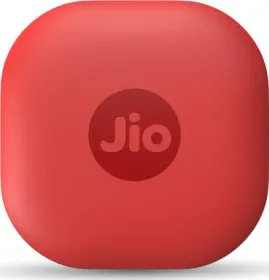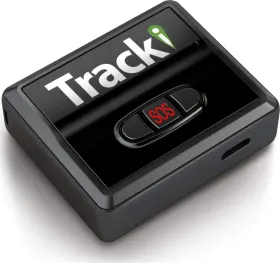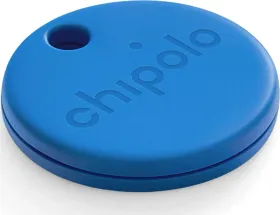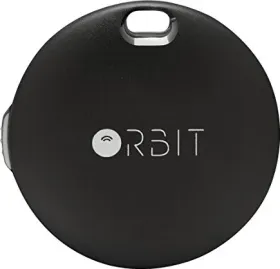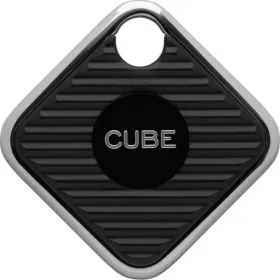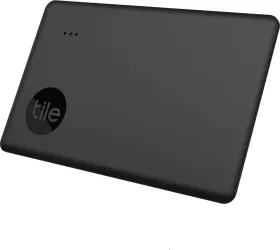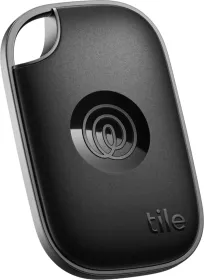The Rs. 1,499 JioTag Air 2024 attempts to capture a significant chunk of the Bluetooth trackers market by striking a balance between usability and affordability. It comes with several upgrades over the original JioTag launched in 2023. For instance, there’s support for Apple’s Find My network, multiple modes for locating tagged items, a loudspeaker for playing sound, and a replaceable battery that lasts a year. However, the tracker lacks some abilities, especially when compared to the more expensive Samsung SmartTag2 and Apple’s AirTag, both of which cost around Rs. 3,000.
Reliance JioTag Air 2024 Price & Availability
The Reliance JioTag Air 2024 is available on JioMart, Reliance Digital, and Amazon for an introductory price of Rs. 1,499. The regular listing price and the MRP printed on the packaging are Rs. 2,999.
The Bluetooth tracker comes in three colors.
- Blue
- Red
- Gray
Pros
- Works with both Android and iOS devices
- The built-in speaker is loud
- Sturdy built
- Battery lasts up to a year
- Runs on a replaceable CR2032 battery
Cons
- No official IP rating
- Lacks the ultra-wideband chip for precision tracking
JioTag Air 2024 Review - Design

The new belongings tracker borrows the design from its predecessor, with a few alterations in color. Like the original model, the JioTag Air 2024 has a square-ish shape with rounded corners. The company’s branding rests on the front (in a dark gray color), whereas the rear side of the tracker houses a multi-purpose button.
There’s a lanyard loop at the top right for connecting a keychain or a string. Interestingly, the device comes with a tiny lanyard string, which makes connecting it to a keychain or zip much easier. The dimensions of the JioTag Air are 38.2 x 38.2 x 7.2 millimeters, which makes it slightly thinner but larger than AirTags (31.9 x 31.9 x 8 millimeters). However, it is shorter than the SmartTag2 (28.8 x 52.44 x 8.0 millimeters).
The JioTag Air measures 10 grams in weight, making it lighter than the AirTag (11 grams) and the SmarTag2 (14 grams). Even though the device’s exterior shell feels firm and sturdy, and it is slightly difficult to open the casing to replace the battery, JioTag Air doesn’t have an official IP rating (while the ones from Apple and Samsung feature an IP67 rating).

Coming back to the exterior shell; there’s a power button on the rear side of the tracker, which can be used to turn the device on/off, play a sound on the connected Android device (this functionality isn’t available on iOS), and resetting the device in case users want to pair it with another smartphone. Diagonally toward the left of the button is a tiny LED indicator, which doesn’t appear that bright on our orange-colored tracker.
Even so, the LED indicator serves its purpose of letting the users know when the device turns on, shuts down, etc. (acting as a confirmation of when users press the button). To ensure comprehensive feedback, the 120-decibel speaker also chirps when interacting with the device directly through its button (with a different tone for starting up, shutting down, etc). For those wondering, the speaker grill is toward the left of the LED indicator.
JioTag Air 2024 - How To Setup



Before we dive into setting up the device, it is important to mention that the JioTag Air is compatible with devices running on Android 9.0 (or newer) or iOS 14.5 (or newer). Further, users can either connect the device with the JioThins app (available on both Android and iOS) or Apple’s Find My app. Although the device is designed to work with both, it can only connect to one app at a time.
Setting up the JioTag Air is pretty straightforward. After taking out the device from its box, users should press and hold the power button for five seconds to switch it on. As the device powers on, users will hear a melody from its speaker, along with the LED light flashing momentarily. To add the JioTag Air to JioThings or Finy My app, users should hit the plus icon (toward the top) or go to Items > Add Other Item, respectively.
After this, users must follow the on-screen instructions while keeping their JioTag Air close to their phones to onboard the tracker in the app. One can also personalize their JioTag Air by adding a name, photo, and selecting the type of asset they’re tracking with the device. Users will hear a melody once the device is added successfully and see the LED light flash momentarily; the device will appear on the MyTags page on JioThings or the Items page in Find My.
JioTag Air 2024 - Tracking The Device


To test the device, I paired it with an iPhone 13 to see how well it performs with the Find My app (as it happens to be a standout feature this year). As mentioned above, adding the device to the Find My network (and my Apple ID) was rather simple. Once the location services are enabled, the Find My app starts showing the tracker’s location (if it’s with the user) or falls back on crowdsourcing the location in case the device is lost.
The first option I get in the app is to play a sound on the tracker, and it is worth mentioning that the JioTag Air’s speaker is louder than the Airtag. The second option, as shown in the app, is to get directions to the device, which appears in Apple Maps. Using the location tagging device with an iPhone, I can also share its location with a friend or family member. Then, there’s the “Notify When Left Behind” feature, which alerts users if they leave the tagged device behind.
Last but not least, iPhone users can also mark the JioTag Air as lost. In this case, the Find My network will notify them when the device returns online and provide its location.
For testing, I kept the device in the corner of one room and then walked with my phone to the opposite end of the house. At about 20 meters, the tracker remained connected with the Find My app, and I could play a sound to find it. However, as I walked down the stairs from the very opposite end, the connection was lost, and I couldn’t play the sound to locate the device.
In that case, one would have to rely on the community-based location tracking mechanism, wherein if another Apple device (with GPS enabled) comes close to the JioTag Air, it will update its location on the Find My app. Yes, the device’s speaker is loud enough, so much so that its sound is audible in the second room or 10-15 meters down the hallway. Still, an AirTag user would surely miss the UWB-based precision finding feature, which makes it much easier to locate a tagged item without playing a sound (which might be alarming to those who don’t know what’s happening).
The connection range of the JioTag Air is up to 20 meters indoors and up to 50 meters outdoors.
JioTag Air 2024 - Additional Features On JioThings App
Reliance has saved a few JioTag Air features for its JioThings app. For instance, when connected with the JioThings app on an Android phone, users can press the power button to ring their smartphone, a nifty way to find the connected smartphone in case users misplace it. Further, JioThings users can use the tracker as a remote shutter to click selfies on their phones. However, the selfies are clicked in the JioThings app, not the phone’s native camera app.
JioTag Air 2024 - Battery Life

Regarding battery life, the device is tested to last up to a year. However, using the built-in speaker to ring the device “unnecessarily.” For those wondering, the device runs on a replaceable CR2032 and can last up to a year. What’s good is that the device comes with a battery in the chassis and an additional battery in the box. Even otherwise, CR2032 batteries don’t cost much. And yes, they are the same batteries that power the AirTag.
To replace the battery, take a prier or a scissor, insert it into the gaps around the lanyard slot, and gently push the two halves apart to access the internals. Having used an AirTag, it was slightly more difficult for me to access the replaceable CR2032 battery inside the JioTag Air, but I made my way through with utmost caution, fearing that I would end up breaking the plastic shell.
Review Verdict: Should You Buy the Reliance JioTag Air (2024)?
Smartprix Rating: 7.6/10
The JioTag Air 2024 is definitely a good belongings tracker, especially for buyers on a budget. What stands out is that the tracker is available on Find My for iPhone users, giving them an affordable option other than AirTag.
It does compromise on some standard features, such as UWB-based precision location. Further, an official IP rating would have instilled more confidence. However, one can’t complain much because of the price at which these are available (which is half that of other popular models).
First reviewed in July 2024.
















